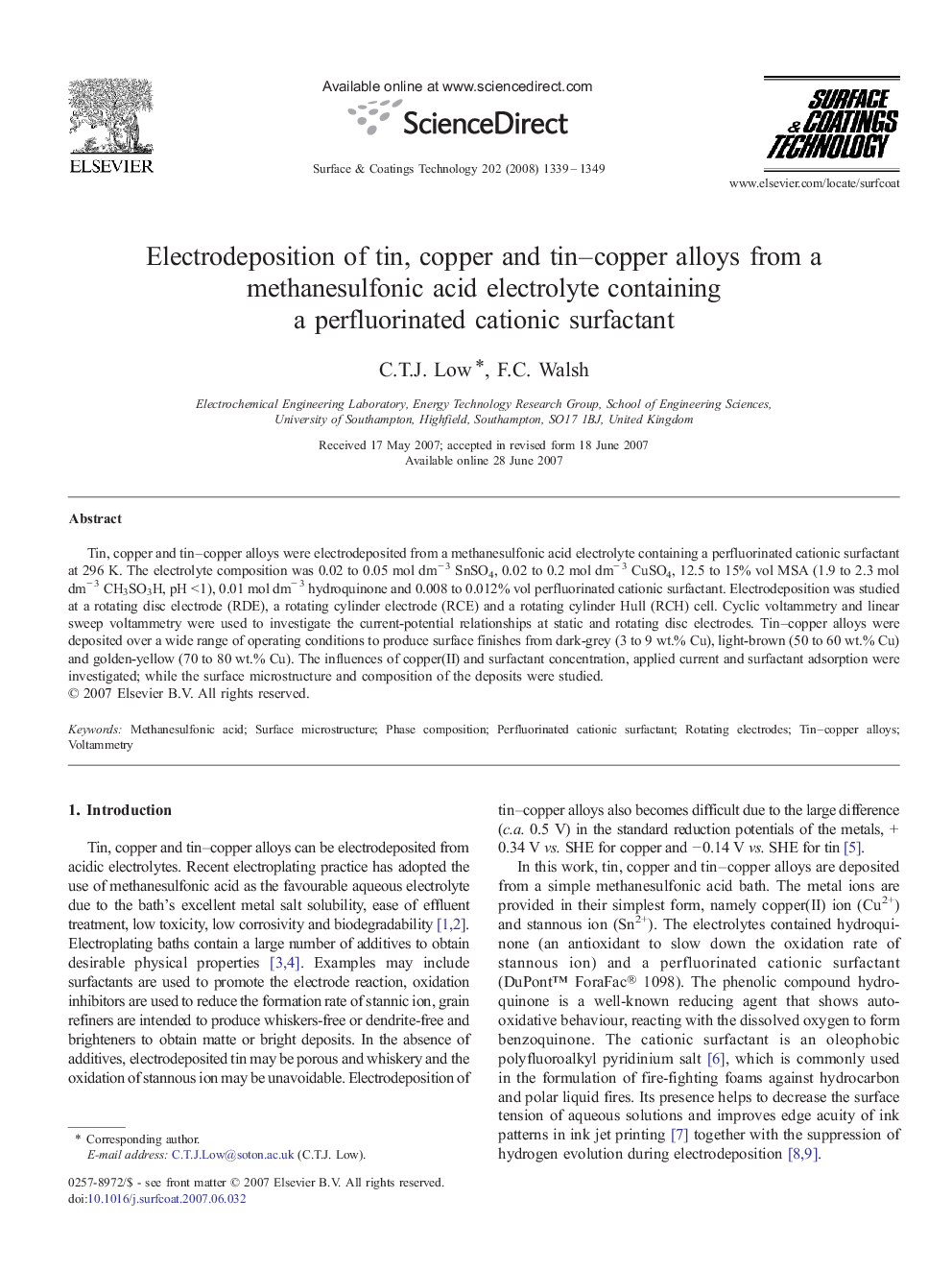| Article ID | Journal | Published Year | Pages | File Type |
|---|---|---|---|---|
| 1662044 | Surface and Coatings Technology | 2008 | 11 Pages |
Abstract
Tin, copper and tin-copper alloys were electrodeposited from a methanesulfonic acid electrolyte containing a perfluorinated cationic surfactant at 296 K. The electrolyte composition was 0.02 to 0.05 mol dmâ 3 SnSO4, 0.02 to 0.2 mol dmâ 3 CuSO4, 12.5 to 15% vol MSA (1.9 to 2.3 mol dmâ 3 CH3SO3H, pH < 1), 0.01 mol dmâ 3 hydroquinone and 0.008 to 0.012% vol perfluorinated cationic surfactant. Electrodeposition was studied at a rotating disc electrode (RDE), a rotating cylinder electrode (RCE) and a rotating cylinder Hull (RCH) cell. Cyclic voltammetry and linear sweep voltammetry were used to investigate the current-potential relationships at static and rotating disc electrodes. Tin-copper alloys were deposited over a wide range of operating conditions to produce surface finishes from dark-grey (3 to 9 wt.% Cu), light-brown (50 to 60 wt.% Cu) and golden-yellow (70 to 80 wt.% Cu). The influences of copper(II) and surfactant concentration, applied current and surfactant adsorption were investigated; while the surface microstructure and composition of the deposits were studied.
Related Topics
Physical Sciences and Engineering
Materials Science
Nanotechnology
Authors
C.T.J. Low, F.C. Walsh,
